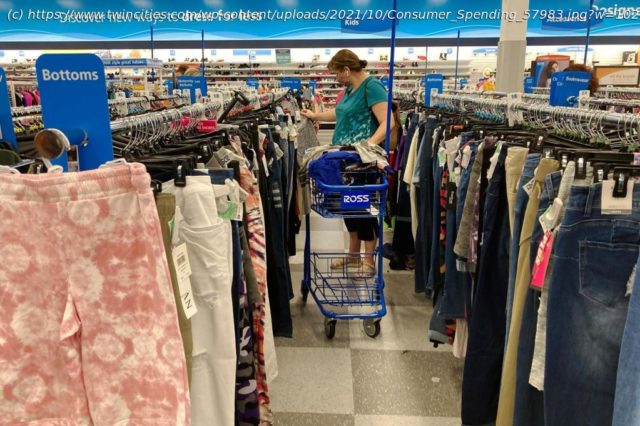WASHINGTON (AP) — Another jump in consumer prices in September sent inflation up 5.4% from where it was a year ago, matching the largest increase since 2008 as tangled global supply lines con…
By CHRISTOPHER RUGABER WASHINGTON (AP) — Another jump in consumer prices in September sent inflation up 5.4% from where it was a year ago, matching the largest increase since 2008 as tangled global supply lines continue to create havoc. U.S. consumer prices rose 0.4% in September from August as the costs of new cars, food, gas, and restaurant meals all jumped. The annual increase in the consumer price index matched readings in June and July as the highest in 13 years, the Labor Department said Wednesday. Excluding the volatile food and energy categories, core inflation rose 0.2% in September and 4% compared with a year ago. Core prices hit a three-decade high of 4.5% in June. The ongoing price gains raise pressure on the Federal Reserve, whose officials have repeatedly said the increases will be transitory, and on President Joe Biden, who is facing an economy of slowing job gains and higher inflation. Biden has been accused by Republicans for spurring inflation with his $1.9 trillion rescue package enacted in March of this year. The unexpected burst of inflation this year reflects sharply higher prices for food and energy, but also for furniture, cars, televisions, and other largely imported goods. COVID-19 has shut down factories in Asia and slowed U.S. port operations, leaving container ships anchored at sea and consumers and businesses paying more for goods that may not arrive for months. “Price increases stemming from ongoing supply chain bottlenecks amid strong demand will keep the rate of inflation elevated, as supply (and) demand imbalances are only gradually resolved,” said Kathy Bostjancic, an economist at Oxford Economics, a consulting firm. “While we share the Fed’s view that this isn’t the start of an upward wage-price spiral, we look for inflation to remain persistently above 3% through mid-2022.” The latest inflationary data makes it even more likely that the Fed will soon begin reducing its $120 billion a month in bond purchases, which are intended to keep longer-term interest rates low.






